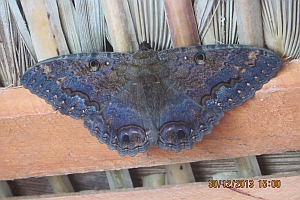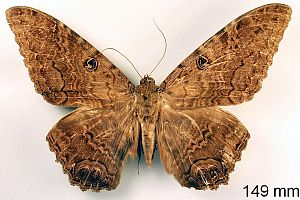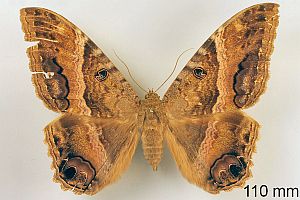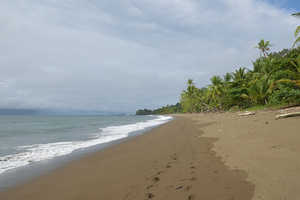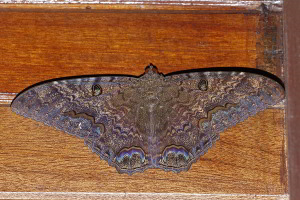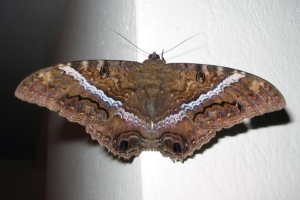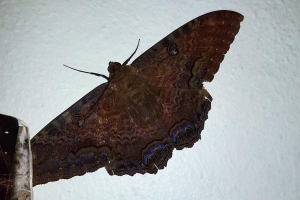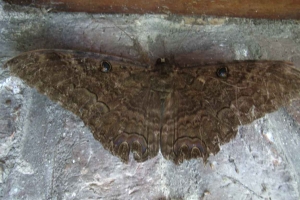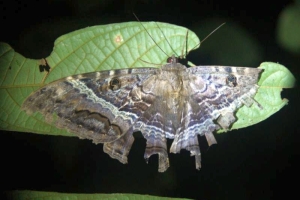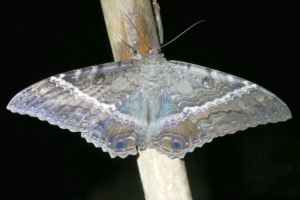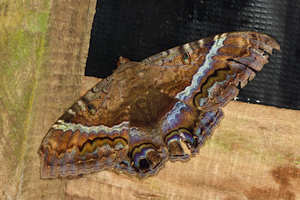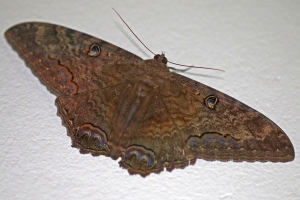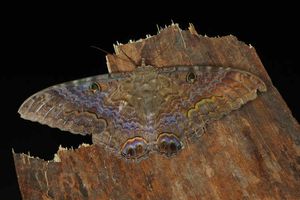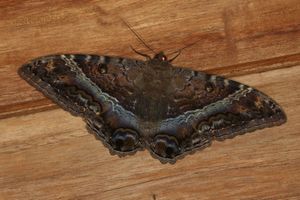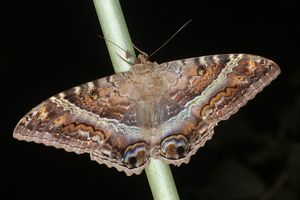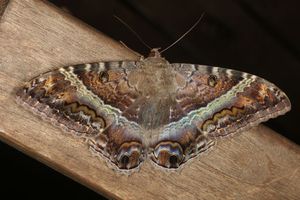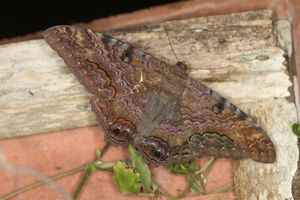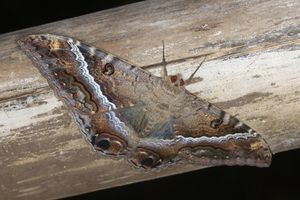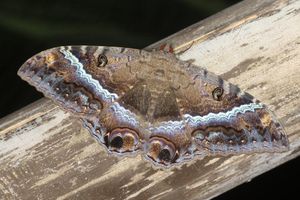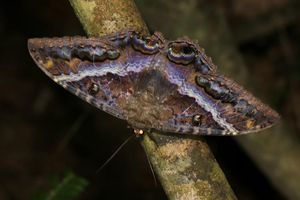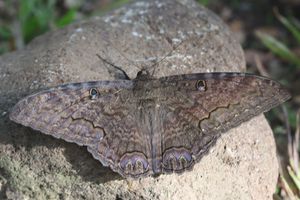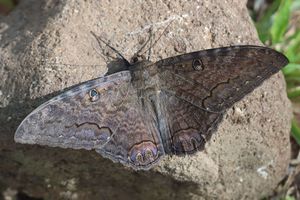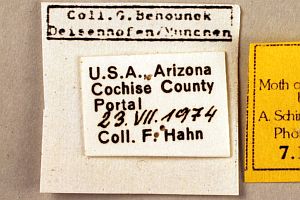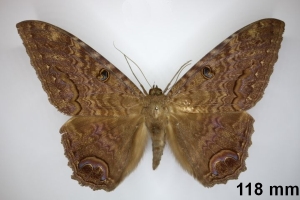

 +56Kontinente:EUNAMAKISA
+56Kontinente:EUNAMAKISA1. Lebendfotos
1.1. Falter
2. Diagnose
2.1. Männchen
2.2. Weibchen
2.3. Erstbeschreibung
2.4. Bezug der Indikation
3. Biologie
3.1. Habitat
4. Weitere Informationen
- Legenden um den Falter: [Beitrag von Klaus Abrecht]
4.1. Andere Kombinationen
- Phalaena odorata Linnaeus, 1758 [Originalkombination]
4.2. Synonyme
- Phalaena agarista Cramer, [1777]
- Noctua odora Fabricius, 1781
- Erebus odora (Fabricius, 1781)
- Erebus marguesi Paulsen, 1871
4.3. Faunistik
Diese vom tropischen Südamerika bis in den Süden der USA verbreitete und häufige Art wird durch günstige Wetterlagen mit Stürmen immer wieder einmal über den Atlantik gebracht. Fibiger et al. (2010) berichten über Funde in England, Dänemark, Südfrankreich und Spanien. - Es kann aber auch nicht ausgeschlossen werden, dass alle Nachweise in Europa auf Einschleppungen zurückgehen.
Kuchlein & de Vos (1999: 211) hatten aus den Niederlanden gemeldet: "[9] In 1980, a specimen of the South American species Erebus odora (Fabricius, 1781) was found in a freighter with bananas from Surinam (pers. comm. W. Hogenes, Zoological Museum of Amsterdam). Of course it concerns an adventive."
Agassiz et al. (2013: 112) führen die Art [mit Tppfehler "Ascalpha odorata"] bei den "adventive species" und schreiben zu England: "One Kew Gardens, 1899: (Clancy et al., 2012: 304, 595). Central American."
(Autor: Erwin Rennwald)
Nach [Global Biodiversity Information Facility] kommt die Art in USA, Mexiko, Costa Rica, Brasilien, Kolumbien, Martinique, Ecuador, Argentinien, Honduras, Panama, Guadeloupe, Kanada, Belize, Dominikanische Republik, Venezuela, Nicaragua, Bahamas, Guatemala, Peru, Puerto Rico, Kuba, Bolivien, Französisch-Guayana, El Salvador, Jamaika, Bonaire, Sint Eustatius und Saba, Uruguay, Paraguay, Trinidad und Tobago, Amerikanische Jungferninseln, Haiti, Turks- und Caicosinseln, Barbados, Suriname, Aruba, Chile, Guyana, Dominica, Antigua und Barbuda, St. Lucia, Sint Maarten, Saint-Barthélemy, Curacao, Grenada, Kaimaninseln, United States Minor Outlying Islands, Britische Jungferninseln, Anguilla, Spanien, Frankreich, St. Kitts und Nevis, St. Martin und Montserrat vor.
Locus typicus gemäß Erstbeschreibung: America.
(Autor: Michel Kettner)
4.4. Literatur
- Agassiz, D.J.L., Beavan, S.D. & R.J. Heckford (2013): Checklist of the Lepidoptera of the British Isles. - Royal Entomological Society. 206pp.
- Kuchlein, J.H. & R. de Vos (1999): Geannoteerde Naamlijst van de Nederlandse Vlinders - Annotated Checklist of the Dutch Lepidoptera. — 302 S.; Leiden (Backhuys Publishers)
- Erstbeschreibung: Linnaeus, C. (1758): Systema naturae per regna tria naturae, secundum classes, ordines, genera, species, cum characteribus, differentiis, synonymis, locis. Tomus I. Editio decima, reformata. 1-824. Holmiae (Laurentius Salvius).
- Bezug der Indikation in der Erstbeschreibung: Sloane, H. (1725): A Voyage To the Islands Madera, Barbadoes, Nieves, St Christophers, and Jamaica; with the Natural History of the Herbs and Trees, Four-footed Beasts, Fishes, Birds, Insects, Reptiles, &c. Of the last of those Islands. To which is prefix'd, An Introduction, Wherein is an Account of the Inhabitants, Air, Waters, Diseases, Trade, &c. of that Place; with some Relations concerning the Neighbouring Continent, and Islands of America. Illusatrated with The Figures of the Things described, wich have not been heretofore engraved. In large Copper-Plates as big as the Life. Vol. II: I-XVIII, div. pl., 1-499, pl. 157-274. London.

























































